Beginner’s Guide to Calligraphy: Art That Inspires
“Your Path to Timeless Hand-Lettered Beauty”
by Collectors Abode | Uploaded December 19, 2024

We, the Collectors Abode Team, independently review everything we recommend. If you buy anything through our links,
we may earn a commission. Learn more ›
Imagine creating beautiful, hand-lettered designs that make every card, invitation, or journal page a unique piece of art. Calligraphy isn’t just fancy writing – it’s an ancient art form celebrated worldwide, from intricate calligraphy in Arabic to delicate calligraphy in Japanese and even the majestic flair of Old English calligraphy fonts. This timeless craft not only adds elegance to your projects but also serves as a mindful, relaxing practice for the creative soul.
In this guide, we’ll dive deep into the world of calligraphy collectibles, explore the beauty of crafting calligraphy quotes, and discover the tools you need to create stunning designs. Whether you’re dreaming of a personalized calligraphy gift, experimenting with a calligraphy signature generator, or searching for calligraphy classes near me, this guide will help you start your journey. With tips, techniques, and resources for mastering calligraphy alphabet fonts, we’ll show you how to turn simple letters into beautiful works of art.
- 1. Getting Started with Calligraphy Basics
- 2. Exploring Calligraphy Collectibles
- 3. Mastering Fundamental Strokes and Techniques
- 4. Learning Simple Alphabets
- 5. Practicing Words and Phrases
- 6. Adding Style and Personality
- 7. Beginner-Friendly Projects to Build Confidence
- 8. Building a Routine for Practice and Progress
1. Getting Started with Calligraphy Basics

Popular Calligraphy Styles
Calligraphy comes in diverse styles, each offering a unique personality to your work:
- Modern Calligraphy: Flexible, free-flowing, and perfect for beginners.
- Traditional Calligraphy: Elegant, structured styles like Copperplate and Spencerian.
- Brush Calligraphy: Dynamic and bold, using brush pens for expressive strokes.
- Pointed Pen Calligraphy: A classic style with sharp contrasts between thin and thick lines.
Discover more: 5 Different Calligraphy Styles on The Spruce Crafts
Must-Have Tools
To start your calligraphy journey, you’ll need a few essentials:
- Calligraphy Pens: Choose from brush pens, dip pens, or felt-tip pens.
Explore Calligraphy Pens on Amazon - Nib and Ink: Metal nibs paired with bottled ink are perfect for pointed pen styles.
Search Calligraphy Ink Sets on eBay - Smooth, Bleed-Proof Paper: Essential for creating clean lines and avoiding ink blotches.
Find Practice Pads on Amazon
Setting Up Your Workspace
Create a well-lit, distraction-free workspace. Use a slanted desk or calligraphy pad to improve posture and precision, and keep your tools organized for an efficient creative flow.
2. Exploring Calligraphy Collectibles
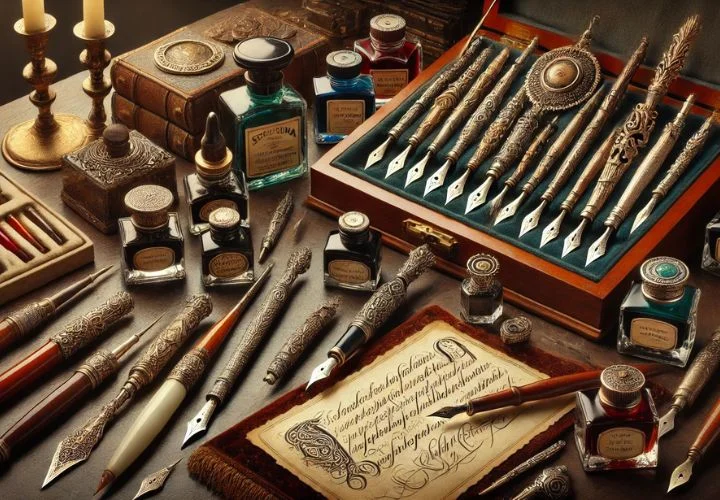
For collectors, calligraphy offers a treasure trove of timeless and meaningful items. Here are some popular calligraphy collectibles you can explore:
Vintage Tools
Antique Calligraphy Pens: From dip pens to fountain pens, vintage models often feature ornate designs and are highly sought after.
Shop Antique Calligraphy Pens on eBay
Rare Ink Bottles
Vintage Ink Bottles: Collect ink bottles in unique colors and limited-edition designs. These are perfect as decor pieces or for use in special projects.
Discover Ink Bottles on Amazon
Historical Manuscripts and Artwork
Handwritten manuscripts and calligraphy pieces from different cultures and eras make for stunning collectible art. Look for Arabic or Japanese calligraphy pieces to add diversity to your collection.
Limited-Edition Nibs and Tools
Brands like Pilot and Lamy often release special nibs or pen sets designed for calligraphy enthusiasts.
Framed Calligraphy Quotes
Collect calligraphy art featuring inspirational quotes, personalized names, or cultural proverbs. These make great wall art for collectors and hobbyists alike.
3. Mastering Fundamental Strokes and Techniques
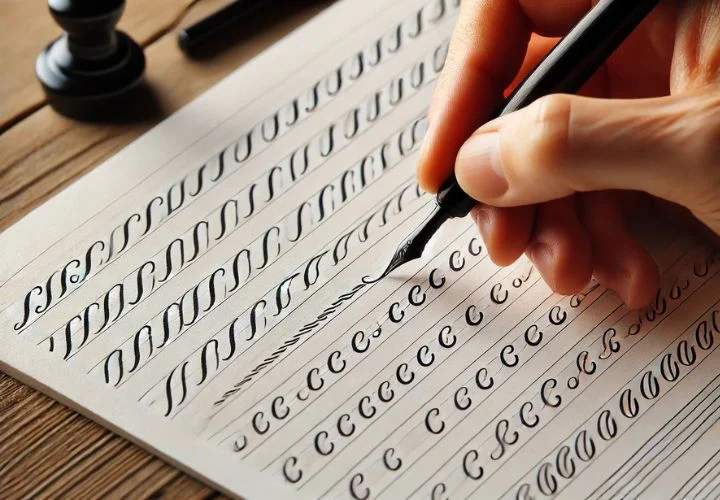
Essential Strokes
Calligraphy relies on basic strokes like upstrokes, downstrokes, and loops. Master these first to build a solid foundation.
Pressure Control
Understanding pressure is key. Use light pressure for thin strokes and firmer pressure for thick lines to achieve a balanced, elegant look.
Practice Patterns
Repetition is the key to consistency. Practice rows of strokes to develop muscle memory and ensure smooth letterforms.
4. Learning Simple Alphabets

Forming Letters
Start with lowercase letters, which are simpler, then advance to uppercase, incorporating flourishes for added elegance.
Gaining Confidence
Use tracing sheets or downloadable guides for consistent practice.
Discover Tracing Sheets on Amazon
Connecting Letters
Combine letters into seamless words, paying attention to spacing and fluidity.
5. Practicing Words and Phrases

Writing Words
Focus on keeping your letters uniform in size and spacing for a polished appearance.
Adding Flourishes
Flourishes like loops and tails add artistic flair. Start simple and gradually explore intricate designs.
Practice Phrases
Phrases like “thank you” or “best wishes” are great for improving practical skills.
6. Adding Style and Personality
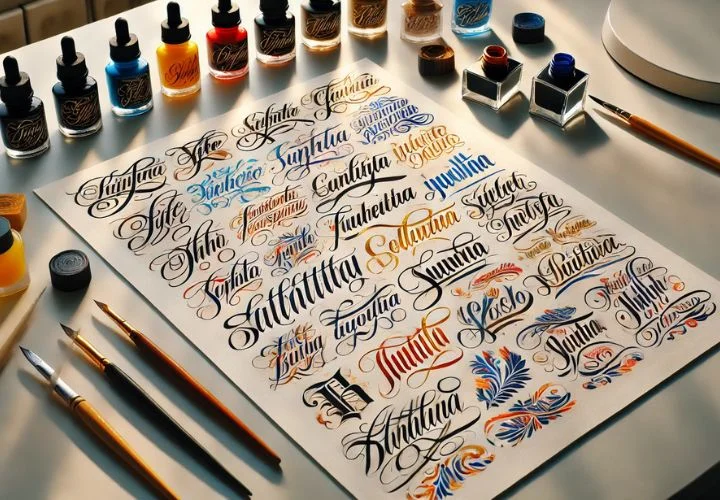
Exploring Fonts and Colors
Experiment with styles like Gothic or Italic and add a pop of color using metallic or watercolor inks.
Creating Unique Projects
Frame a favorite calligraphy quote, personalize cards, or design stunning calligraphy gifts.
Discover ideas: Creative Calligraphy Projects on Skillshare
7. Beginner-Friendly Projects to Build Confidence
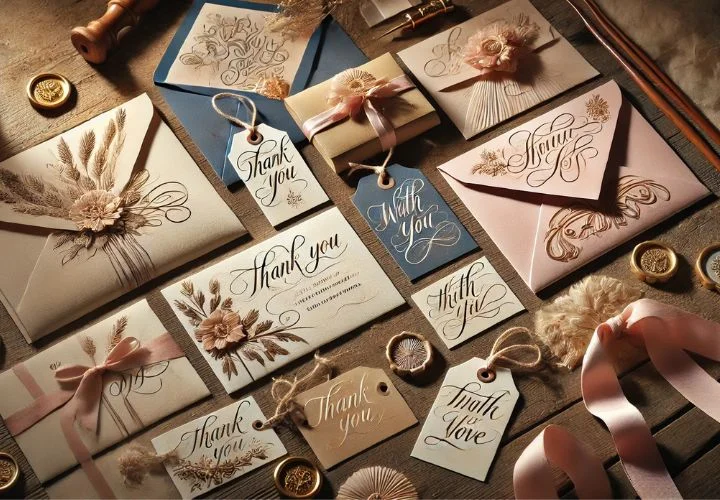
- Personalized Cards: Add heartfelt touches to gifts.
- Home Décor: Frame calligraphy quotes to display.
- Envelope Addressing: Make invitations and mail extra special.
8. Building a Routine for Practice and Progress
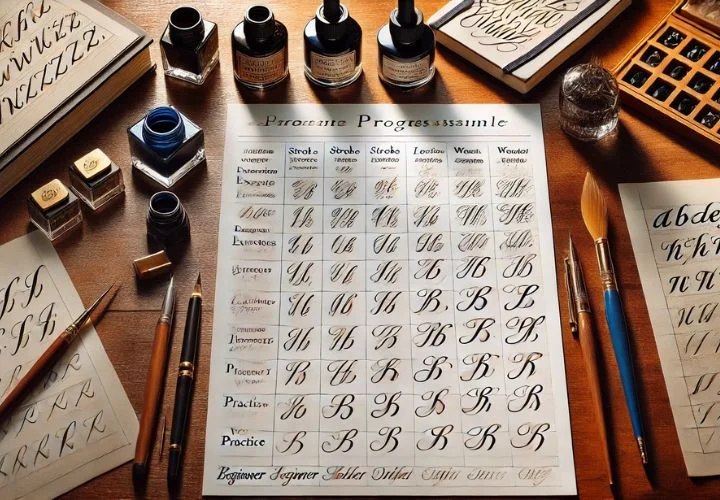
- Practice Regularly: Dedicate 15-20 minutes daily.
- Track Your Progress: Save early works to see your improvement.
- Use Guides: Structured worksheets build confidence.
Conclusion
Calligraphy is a rewarding journey where every stroke brings you closer to creating something truly beautiful. Whether you’re collecting rare calligraphy collectibles or designing personalized projects, the possibilities are endless. Embrace the process, celebrate small wins, and share your progress as you master this timeless art form.
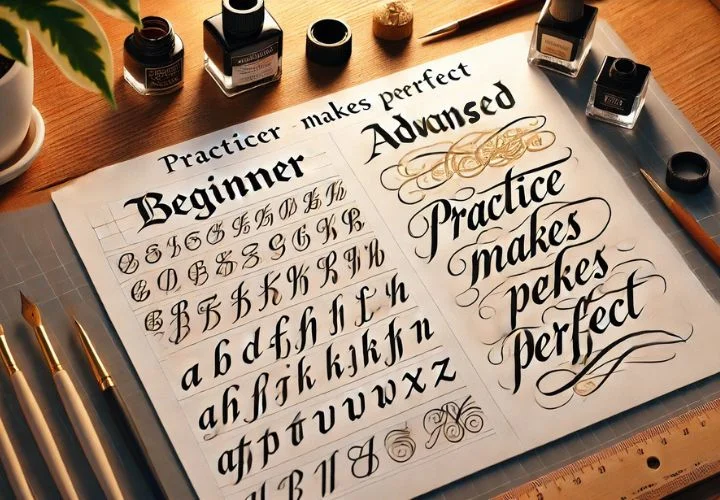
Related Resources
- The Postman’s Knock Blog
- Calligrascape Calligraphy Guide
- The Happy Ever Crafter – YouTube Channel
- Calligraphy Books on Penguin Random House
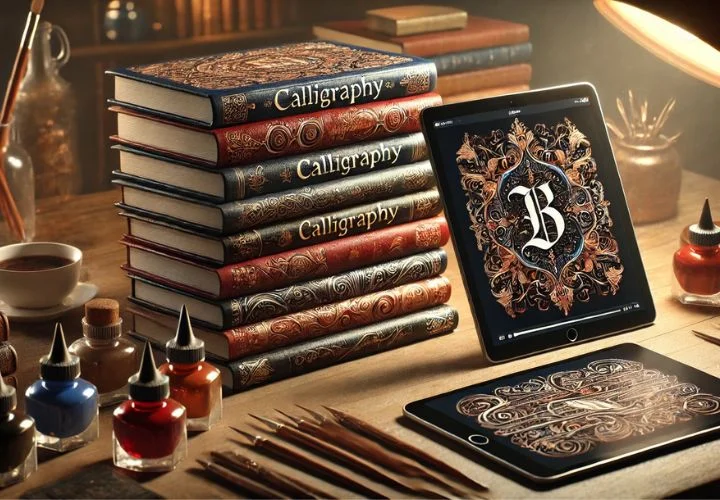
FAQ
- Q: Is calligraphy difficult to learn?
A: With regular practice, anyone can learn calligraphy. It’s all about getting comfortable with the strokes. - Q: What style is easiest for beginners?
A: Many beginners find modern calligraphy the easiest, as it offers more freedom and a personal touch. - : How much time should I dedicate to practice?
A: Aim for 15-20 minutes daily to build muscle memory and progress steadily. - Q: What’s the best paper for calligraphy?
A: Smooth, bleed-proof paper is ideal, as it prevents ink from smudging and keeps nibs from catching. - Q: Can I practice calligraphy digitally?
A: Absolutely! Digital tools and apps allow you to practice on tablets, offering a convenient alternative.